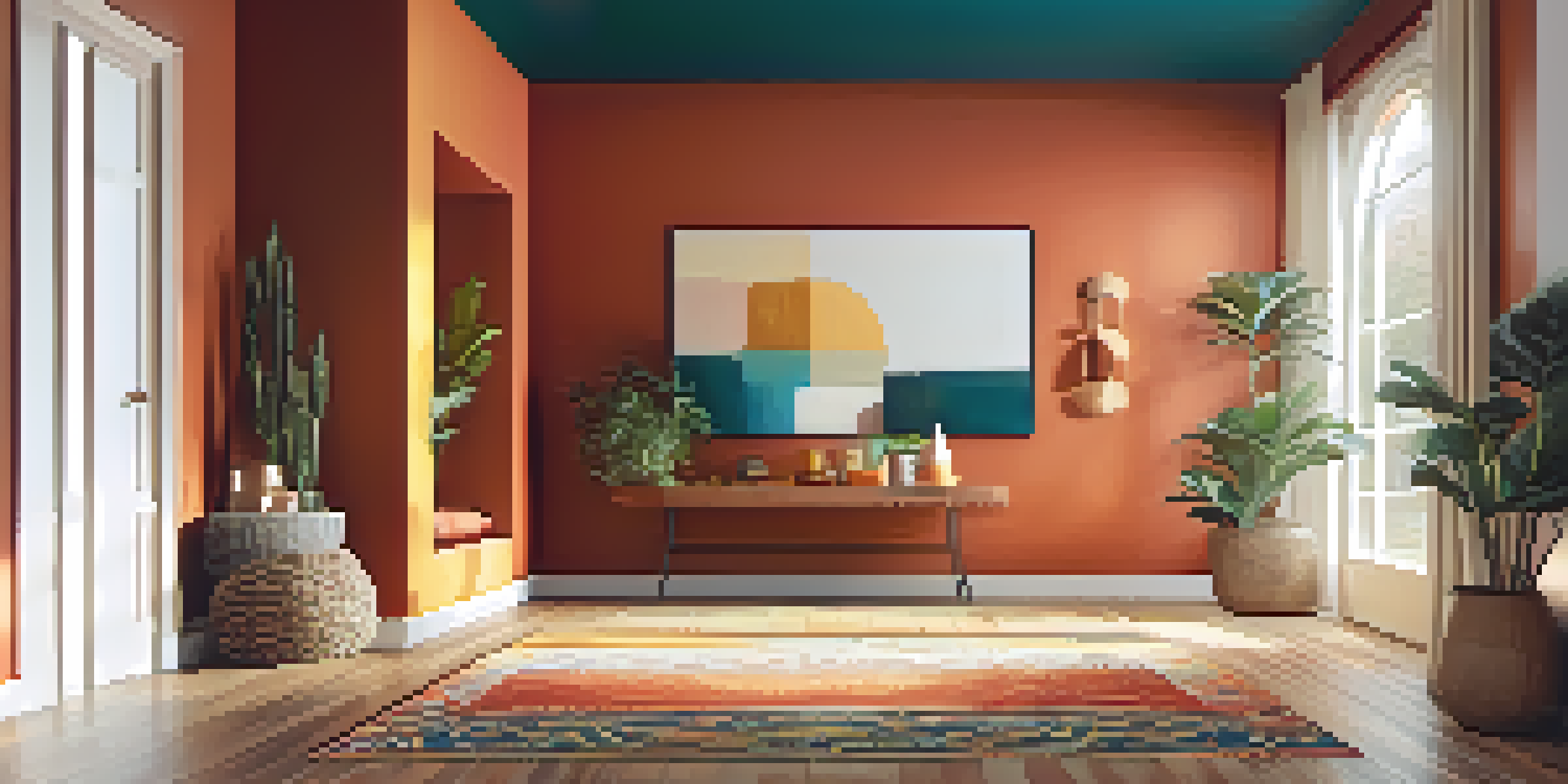How to Use Color Psychology in Entryway Design

Understanding Color Psychology in Home Design
Color psychology studies how different colors influence our emotions and behaviors. In home design, especially in spaces like entryways, these colors can set the tone for the entire house. For instance, warm colors like red and orange can evoke feelings of energy and warmth, while cool colors like blue and green promote calmness and relaxation.
Choosing the Right Colors for Your Entryway
When selecting colors for your entryway, consider the overall mood you wish to create. If you want an inviting and energetic atmosphere, warm tones are a great choice. On the other hand, if you prefer a serene and tranquil entry, soft blues or greens can help achieve that peaceful vibe.
Colors Impact Entryway Mood
Choosing the right colors for your entryway can create inviting or tranquil atmospheres, significantly influencing the overall mood of your home.
The Power of Neutrals in Entryway Design
Neutral colors, such as beige, gray, and white, are often overlooked but play a crucial role in design. They provide a versatile backdrop that can complement any style or accent color. By using neutrals, you can create a space that feels open and airy, allowing for easy coordination with other design elements.
Accent Colors: Adding Personality to Your Entryway
Accent colors are a fantastic way to infuse personality into your entryway without overwhelming the space. Think of a vibrant yellow or a deep teal that can be added through accessories like a rug or artwork. These pops of color can create focal points that draw the eye and make your entryway memorable.
Neutrals Enhance Design Flexibility
Neutral colors serve as a versatile backdrop that complements various styles and allows for easy coordination with accent colors.
Color Combinations: Finding the Right Balance
Finding the right color combination is essential for a cohesive entryway design. A good rule of thumb is to use the 60-30-10 rule, where 60% is a dominant color, 30% a secondary color, and 10% an accent color. This approach not only ensures balance but also makes your entryway visually appealing.
Lighting's Role in Color Perception
Lighting can drastically change how colors are perceived in your entryway. Natural light can enhance warm tones, making them feel more inviting, while artificial lighting might soften colors or create shadows. It's essential to consider your lighting sources when choosing colors to ensure they appear as intended throughout the day.
Test Colors Before Finalizing
It's essential to test paint samples in different lighting conditions to ensure the colors you choose look great throughout the day.
Personalizing Your Entryway with Color
Your entryway should reflect your personality and style. Don’t shy away from using colors that resonate with you, whether they are trendy or classic. Incorporating personal elements, like family photos or unique decor in your chosen colors, can create a welcoming and customized space that tells your story.
Testing Colors Before Committing
Before fully committing to a color palette, testing is crucial. Use paint samples to see how colors look in different lighting at various times of the day. By painting small sections of your entryway, you can better visualize how the colors interact and make adjustments before taking the plunge.